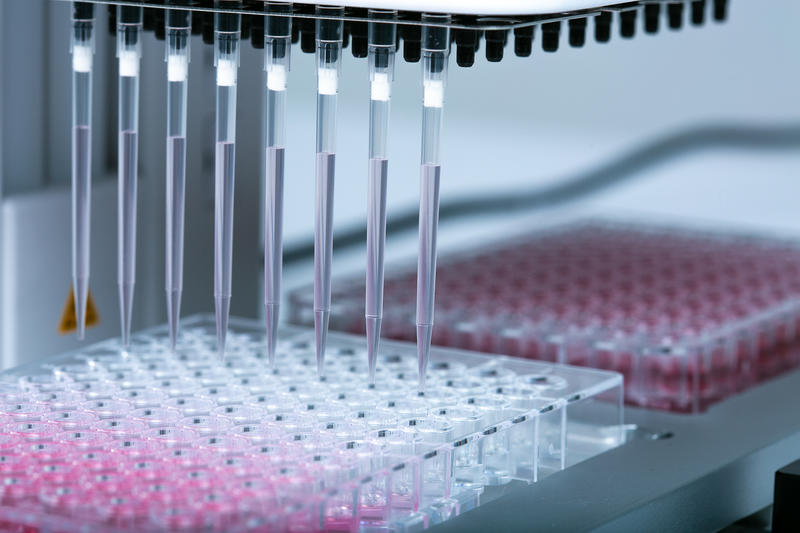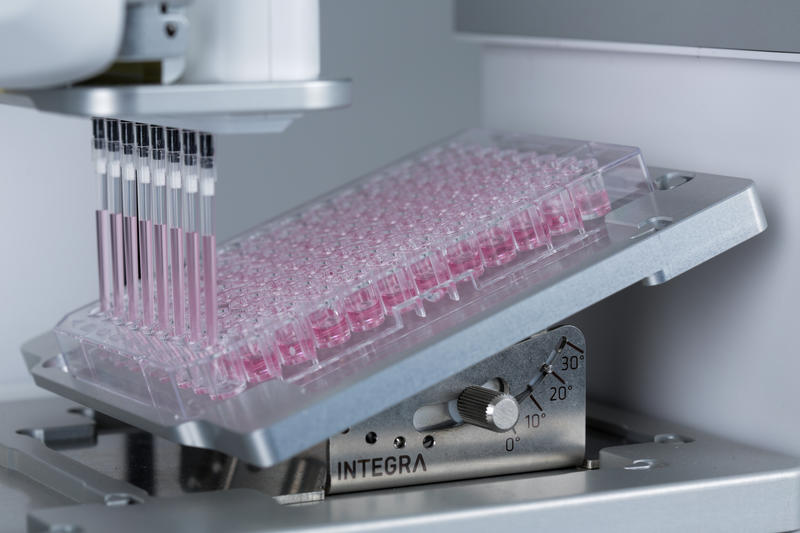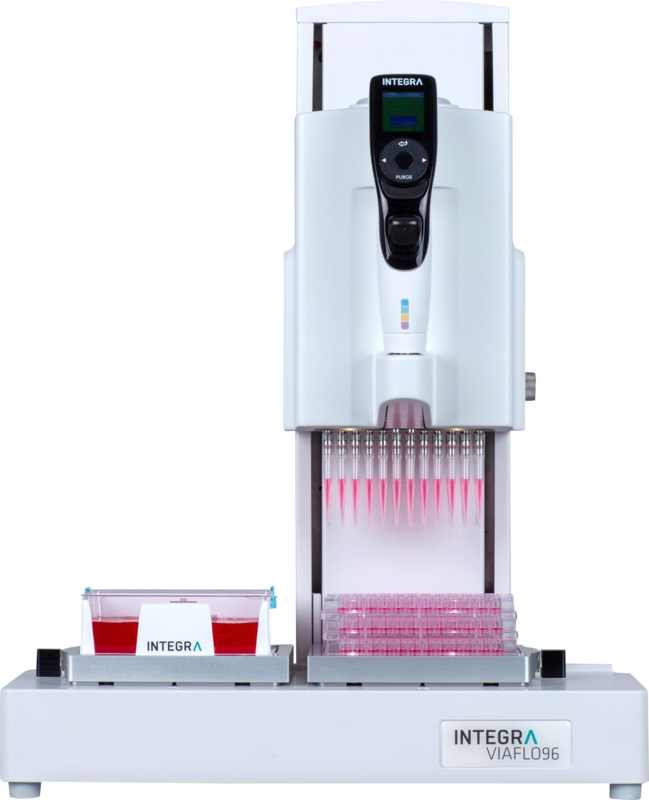How electronic pipettes can ease the transition to automation
The automation of workflows has been proven to offer significant advantages over manual procedures where high throughput and reproducible results are needed in short time frames.1 Automation is more commonplace in industrial and clinical laboratories – where high productivity rates are paramount – but adopting automation in academic laboratories could ease the translation from research to commercialization, improve reproducibility and see researcher efficiency soar.
Painstaking work
Performing key cell culture tasks manually can require many hours of repetitive and painstaking work, leaving scientists susceptible to fatigue and the risk of repetitive strain injuries. In addition, living cells require specific environmental parameters that need to be maintained throughout every stage of the cell culture workflow – cell growth, harvesting, seeding, and analysis – so laboratory personnel need to work with the highest precision. Any mistakes that are made during the process can be costly to the reliability of results and, in the incidence of cell therapies and biopharmaceuticals, potentially hazardous to patients. Switching to automated workflows can help to carefully control and maintain environmental conditions for a high throughput of samples, to meet the strict standardization requirements of cell culture.

The balance of opinions
The need to invest in a fully automated set-up is frequently a topic of debate, despite having clear advantages for reproducibility and throughput. Academic researchers and small-scale research and development teams are often reluctant to invest in automation equipment due to concerns about the cost – with reports of full systems costing upwards of $1M – and the workspace that they require.2 The standardized procedures that come with complete automation also decrease process flexibility, which is often important as new research findings and protocols emerge. Therefore, the perfect balance between automated and manual workflows – considering the necessary throughput, flexibility, investment, and reproducibility – will be determined by the requirements of the individual lab.

The challenge of upscaling
Increasing the throughput of samples by automation is hugely beneficial for lab productivity, as well as for scaling up cell-based workflows for clinical or commercial applications. The transfer phase when switching from a manual to automated workflow is likely to be a learning curve that requires additional training until lab members are familiar with new equipment and supplies. Automating a stage in the process that does not directly influence the cell sample, such as pipetting medium or buffers, is relatively straightforward. However, when handling samples, the accuracy of each step needs to be validated to ensure that it is not exerting stressful forces on the living cells. It is also important that these steps are standardized, so that variations in pipetting speeds or pipette tips do not influence the viability of cells or the reproducibility of results. Once fully established, an automated workflow can increase throughput, improving the efficiency and productivity of the lab.
A stepwise solution
Automated systems can offer significant advantages for all key parts of the cell culture process – including growing cultures, plating cultures, dilutions, and any other cell handling tasks – freeing up the lab technician. Complete automation would be ideal for routine workflows but, for other scenarios, stepwise automation with pipetting systems is a far more accessible route to establish a higher throughput. This can start anywhere from switching to electronic multichannel pipettes to investing in an automated plate filler.
Multichannel pipettes can range from 4 to 384 channels, allowing the user to simultaneously pipette complete rows/columns – or even entire microplates – at the same time. Electronic pipettes also offer a variety of preset or customizable modes and settings, so that pipetting protocols and mixing routines can be selected and saved for repeated use in different workflow stages. For example, repeat dispense mode aspirates a large volume of liquid and dispenses it in small, defined amounts – reducing the need to move back and forth between the source and the plate – while custom programs allow users to define routines that suit their own requirements. Keeping automation to this simple, yet effective, standard of multichannel electronic pipettes offers a degree of flexibility in protocols, and allows the pipette to be used for different stages in a workflow.
Electronic pipettes that offer automatic adjustable tip spacing provide a further degree of automation, allowing liquid to be transferred to different labware types for even faster pipetting workflows with fewer transcription errors. Furthermore, an assisted robotic platform can be used in conjunction with different electronic pipettes to combine the flexibility of handheld pipettes with the throughput of automation. Ideally, these robotic tools should be portable with a small footprint, allowing them to be seamlessly incorporated into any lab, as well as providing the option for sterile work in a laminar flow cabinet.
It is now widely agreed that automated pipetting is likely to become an industry standard for the accurate, reproducible, cost-effective, and high throughput development of cell-based products3, and electronic pipettes – together with robotic assistants – can help labs to adopt these practices sooner.

References
1 Holland, I., & Davies, J. A. (2020). Automation in the Life Science Research Laboratory. Frontiers in Bioengineering and Biotechnology, 8, 1326.
2 Wong, B. G., Mancuso, C. P., Kiriakov, S., Bashor, C. J., & Khalil, A. S. (2018). Precise, automated control of conditions for high-throughput growth of yeast and bacteria with eVOLVER. Nature biotechnology, 36(7), 614-623.
3 Doulgkeroglou, M. N., Di Nubila, A., Niessing, B., König, N., Schmitt, R. H., Damen, J., ... & Zeugolis, D. I. (2020). Automation, monitoring, and standardization of cell product manufacturing. Frontiers in Bioengineering and Biotechnology, 8, 811.























